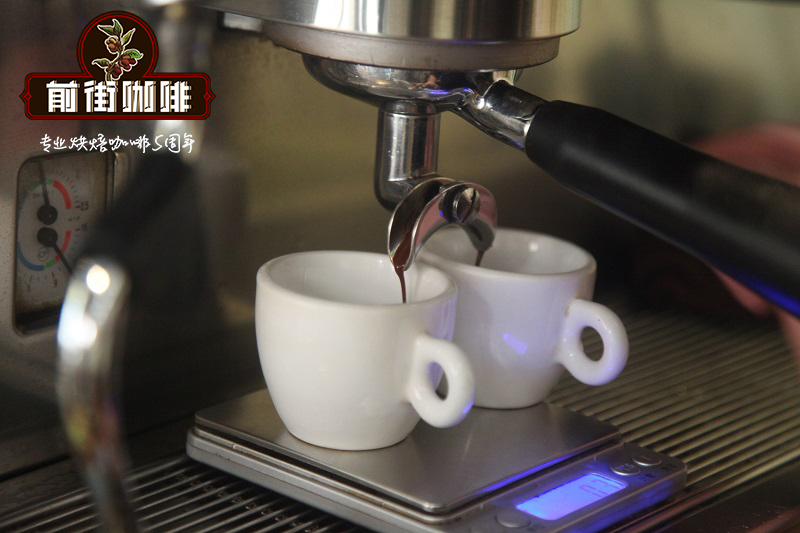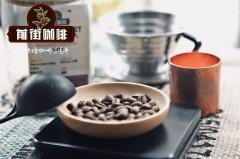What coffee beans are good for espresso? how to make espresso beans? how much is espresso beans?

Professional coffee knowledge exchange more coffee bean information please follow the coffee workshop (Wechat official account cafe_style)
Common problems and solutions when making espresso:
First, check the speed of the current. If the current is too slow, the coffee will become greasy and sharp. Remember, the coarser the coffee powder, the faster the water flow; the finer the grinding, the slower the flow.
At the same time, you should also pay attention to the water output of the coffee machine. Remember, espresso goes through three color changes when it comes out of the coffee machine. If the coffee maker stops coming out of the water after the second color change, you should carefully adjust the amount of water out of the coffee machine.
Finally, you need to check the temperature and pressure of the coffee machine. Most of the coffee machines we use today have temperature and pressure gauges on them. The steam pressure of the coffee machine should be controlled between 1-1.5bar (bar), and the pressure of the boiler should reach 9 bar (bar) when making coffee. Remember, never check the pressure gauge during off-working hours, as the values at that time do not have any reference value.
Coffee oil (Crema)
● condition 1: oil foaming is large and its persistence is not strong.
If this happens, the first thing you need to do is look at the roasting date of espresso beans. Coffee beans produce a certain amount of nitrogen dioxide after roasting. If the espresso beans are just roasted, the coffee oil will be blistered and will not last long. What you need to do is to rest the coffee beans so that the gas is fully released so that the coffee oil will last longer. But if you sit for too long, more than 21 days, the taste of coffee oil will become stale. In addition, you should note that as the coffee beans continue to release gas, the taste of the coffee beans will change.
● condition 2: there is no coffee oil in the coffee.
This may be because the coffee grease disappears too fast. If this is the case, please refer to the "situation one" section. But if there is no coffee oil at all, it may be because your coffee has gone bad. Therefore, you must make sure to use your coffee beans within 21 days after baking.
At the same time, you should consider the storage conditions of coffee. Remember, coffee must be kept in a cold and dry place, never in contact with heat sources or in the refrigerator, causing the coffee to deteriorate faster.
If you are using a Synesso or Expobar coffee machine, you need to check to see if the water temperature is correct when making coffee. Take Synesso as an example, the coffee machine has a "Black Element" switch. If you accidentally run into the coffee maker while cleaning it, you need to turn it to the left and put it back in the right position.
Finally, you need to make sure that there is no extra residue at the bottom of your coffee cup!
● flow bifurcation
Remember, in the standard coffee making process, water must flow evenly through the coffee powder under pressure, so as to ensure the full fusion of the water and the coffee powder. If the water flow bifurcates, it means that the contact between the water and the coffee powder is not enough, and the water flows from the place where the coffee powder is least. To test whether the coffee extraction is uniform, you can use Naked Portafilter (a bottomless coffee handle that makes it easy to observe the flow of water).
In order to ensure that the contact between water and coffee powder is uniform enough, you need to do the following: first, you need to make sure that the amount of coffee powder is accurate and that pressed powder is solid but not hard. Second, the coffee handle must be kept dry before making coffee. The wet handle will cause water to flow easily through the coffee powder. Third, the strength of the powder must be uniform and accurate, if the pressure is too small or uneven, it will lead to incomplete extraction.
Finally, I would like to remind you not to knock on the edge of the handle. Tapping on the edges will only make pressed powder look better, but it will never make the coffee taste better. If you hit too hard, you will break the pressed powder, causing the water to flow through the cracks.
● water changes color too fast.
If the current changes color too fast, the taste of the coffee will become thinner and sweeter, and the overall taste of the coffee will be bitter and earthy. Spoiled coffee beans can also cause the water to change color too quickly, so you need to check the roasting date of the coffee again. In addition, too fast water can also lead to early discoloration. At the same time, you need to check if there are bifurcations. If so, please refer to the "flow bifurcation" section. Finally, check the temperature of the water.
● tastes sharp or bitter
First of all, you still need to make sure that the coffee beans are roasted and check that the coffee beans have expired. Second, you need to check that the flow and color changes are accurate. The flow of water too fast or too slow can cause the coffee to be too bitter. Finally, check whether the water temperature is normal.
● tastes too sour
One of the reasons why coffee is too sour is that coffee beans are not fully vented. Let the coffee sit for a few days, but no more than three weeks. In addition, you still have to check whether the water temperature is normal.
Thus it can be seen that most of the problems encountered in the production of espresso can be avoided by ensuring coffee freshness, suitable storage conditions and precise operation. Of course, the quality of the coffee machine itself is also very important. You need a coffee machine with constant temperature and multiple boiler systems. There is usually a temperature change in a single-boiler coffee machine, resulting in a variable taste. The stability of the multi-boiler coffee machine is stronger, which can ensure the constant water temperature.
But if none of the above methods work, contact your local coffee expert or coffee machine repairman. The above methods are suitable for most common problems, but if you encounter too many problems or are difficult to solve, you should consider finding a coffee machine repairman to help you test the coffee machine and bean grinder. In any case, we all have the same dream of making the perfect espresso.
Three factors affecting the quality of Italian espresso by ●: powder quantity, total weight and time
Summing up the experience in the continuous experiment, the order of the three factors affecting the final quality of Italian espresso should be: powder quantity > total weight > time. Nowadays, the time for making espresso in major cafes is usually 22-40 seconds, of which 25-32 seconds is the most common. Coffee with shorter production time is usually lighter and more acidic, while coffee with longer production time is usually thicker and sweeter. If the time is too short, the coffee will become insipid, obvious defects and acidity. If the time is too long, the coffee will become extremely bitter and difficult to swallow. There is no final conclusion as to whether the time is long or short, but controlling the production time of coffee is definitely the key to improve the quality of coffee.
Suppose your ideal coffee formula is 20 grams of coffee powder, 40 grams of total weight, and 30 seconds of cooking time. When making coffee, 20 grams of coffee powder and 40 grams of total weight must be immovable and must not be changed, but the time can be adjusted slightly. Why can the time be adjusted? Because it is far less important than the previous two points.
There are three main factors that affect the coffee making time of ●:
1. Degree of grinding: this is the effect of the degree of grinding on the time of coffee making. The finer the coffee powder is, the slower the water flow is; on the contrary, the thicker the coffee powder is, the faster the water flow is. You can adjust the thickness of the coffee powder by adjusting the grinding parameters of the bean grinder, so as to make the coffee reach the target total weight within a specified period of time.
two。 The standard pressure of most coffee machines is 9bar, which is unshakeable for most people, but for some coffee maniacs, they prefer to try to make coffee under different stressful conditions. Please note that as the door is as deep as the sea, don't easily imitate what they do. you just need to know that the less the pressure inside the coffee machine, the slower the coffee will be made. With regard to the flow speed, the flow speed of most coffee machines is between 250-280 ml / 30 seconds, you can put an empty milk tank under the handle, and then measure the water output for 30 seconds. I personally think the ideal flow speed of the coffee machine should be between 200-280 ml / 30 seconds, in addition, you should also note that the flow speed of different head groups is different.
3. The number and size of holes in filter bowls (technically referred to as "total open area (Total Open Area), or" TOA ") also affect the speed at which water filters through coffee powder. The higher the "TOA" value of the filter bowl, the faster the flow of water through the filter bowl, but in fact, as long as you use the VST filter bowl, this factor can be ignored. Among these three factors, the thickness of coffee powder has the greatest influence on coffee making time. Once you have confirmed the amount of powder and the total weight of the coffee, you can start to adjust the production time of the coffee. The most direct way to adjust the production time is to adjust the thickness of the coffee grinding. Remember, before making coffee, adjusting the degree of grinding is your last chance to adjust the degree and concentration of coffee extraction.
END
Important Notice :
前街咖啡 FrontStreet Coffee has moved to new addredd:
FrontStreet Coffee Address: 315,Donghua East Road,GuangZhou
Tel:020 38364473
- Prev

Laohua coffee beans recommended _ how to eat espresso beans _ how to choose concentrated roasted coffee beans
Professional coffee knowledge exchange more coffee bean information Please pay attention to the coffee workshop (Wechat official account cafe_style) although Italy does not produce coffee beans, but the Italians are good at putting raw coffee beans from the world's major producers into the bag, before and after roasting, mixed according to different proportions to become Italian mixed beans. Italian mixed beans are ground and then extracted by coffee machine at high temperature and high pressure.
- Next

Italian coffee must use espresso beans?_espresso beans brand recommendation
Professional coffee knowledge exchange More coffee bean information Please pay attention to coffee workshop (Weixin Official Accounts cafe_style) Italian espresso coffee is often called the soul of coffee. For those who drink coffee frequently, coffee with cream or milk is not as enjoyable as a cup of strong espresso coffee. So about espresso coffee, besides less, fragrant and bitter, it also
Related
- What is the Philharmonic pressure? How to use Philharmonic pressure to make delicious coffee
- Why does a hand grinder have more fine powder than an electric grinder?
- In addition to the hot mom, what is the difference between the versions of EK43 | ditting and Mahdi ek43?
- What kind of equipment do you need to make coffee by hand? Introduction to novice starter cooking equipment tools
- Espresso needs to be ground how thick and thin scale entry Italian Coffee Machine Bean Grinder investigation and Grinding course
- How much does it cost to open a small private cafe? How much does it cost to learn coffee? How to operate it?
- The difference between the flavor characteristics of hand-brewed coffee and coffee maker is hand-brewed coffee really better than coffee maker? Can I use a coffee machine to make coffee beans by hand?
- The difference between 01 and 02 of hario v60 filter cup what is the difference between 01 and 02 filter cup opening and cooking flavor
- What's the difference between the smart cup and the French kettle? Which is better, the French kettle or the Smart Cup?
- What's the difference between a smart cup and a V60 filter cup? The difference between the taste of smart cup and hand-brewed coffee

